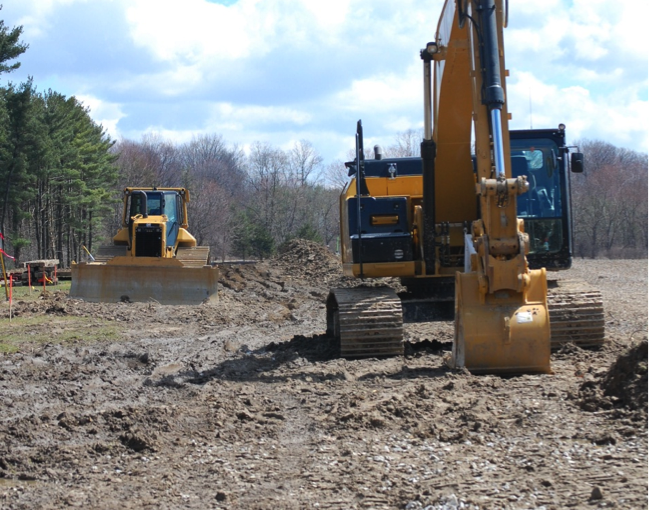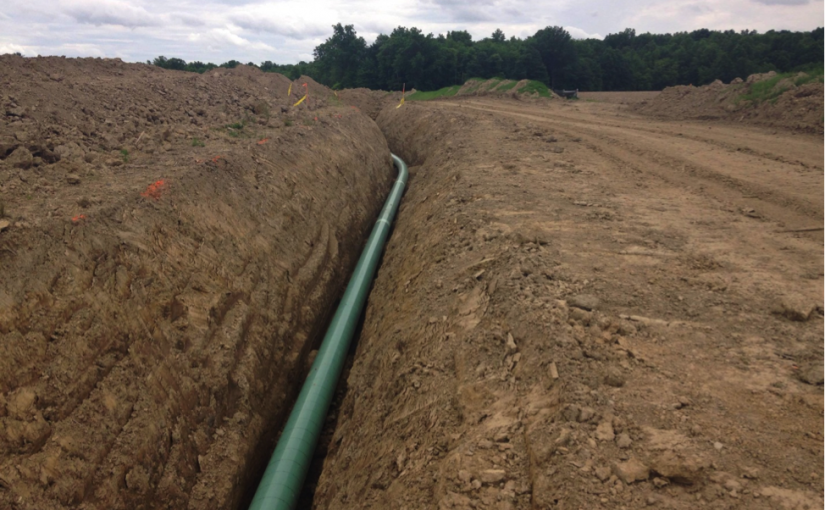Pipeline Right-of-Way Width
Why does a pipeline company need fifty to one hundred feet of width to install their pipeline?
It depends on how many lines the company is installing and what size the pipeline(s) are. Modern safety standards require that lines be buried in their own ditch. The pipeline company likes to leave two to five feet between each line (this varies depending on the width of the lines, the products within the lines, and pressure). This allows them to access each line via backhoe or Track Hoe without endangering the next line over. So if your Right-of-Way (“ROW”) allows for four or five pipelines the occupied space can easily be twenty-five feet even for lines that are only twelve inches wide [(four, 12” lines = four feet) + (five feet of space between each line = 20 feet) = twenty-four feet of occupied space]. If the lines are twenty-four inches, the occupied space is twenty eight feet. If the lines are thirty-six inches, the occupied space is thirty-two feet, and so on.
Second, and most landowners don’t realize this, a lot of the space is necessary for equipment traffic. In the picture below you can see a Track Hoe passing a bulldozer. A Track Hoe is approximately 11.5 feet wide. A bulldozer is approximately 15 feet wide. Put them together and you’ve got 26.5 feet. This assumes that they can pass without an inch to spare. Realistically it takes about thirty feet of width to allow for two lanes of equipment traffic. Two lanes are necessary for moving soil and stretching out the pipeline on the property.
Construction equipment operating within a pipeline right of way
Third, the spoil piles occupy a lot of space. As a landowner you want your top soil to be protected. That means segregating it from the rest of the sub soil so that it can be replaced last (on top). This means that a pipeline company has to keep separate piles for top soil and sub soil. The deeper the line, the more soil that they temporarily remove, and the bigger the spoil piles. In the picture below you can see a top soil spoil pile. The pipeline company removed the top twelve inches of soil (top soil) and segregated it. The enormous pile you see is only the top twelve inches of soil. The pipeline is also 12” wide, but the top soil takes up far more than twelve inches after it is aerated. That 12” of top soil quickly turned into a three foot pile. This is prior to digging the trench.
The photo below shows the line in the trench. The top soil pile (12” worth of top soil) is on the left. The subsoil pile (36” worth) is shown on the right. In the middle you can see where room was left for two lanes of equipment traffic. This image is a great depiction of how seventy-five feet is easily occupied for a single pipeline installation.
A 75′ wide pipeline right of way, with topsoil piled to the left, and subsoil to the right
Important Considerations for the landowner:
Important things to consider when determining the acceptable width are:
• The number of pipeline(s) to be installed
• The width of the pipeline(s) to be installed
• The depth of the pipeline installation
• The quantity of topsoil (how deep does your top soil go?)
• The presence of shallow bedrock (if any)
• A company’s ability to access their ROW (whether any temporary access roads are needed)
It is critically important to have a knowledgeable pipeline attorney draft your pipeline documents to ensure that 1) you are not sacrificing any more width than necessary; 2) that you are adequately paid for the width; 3) that an appropriate restoration plan has been set to replace subsoil and topsoil; and 4) that a company’s access to your property is limited to the ROW area.



